I spent all day yesterday on the Mississippi River.

How can you come to the Midwest and not talk about the mighty Mississippi River.
It plays such an important role in the Midwest’s development, economy, eco system, recreation and history.
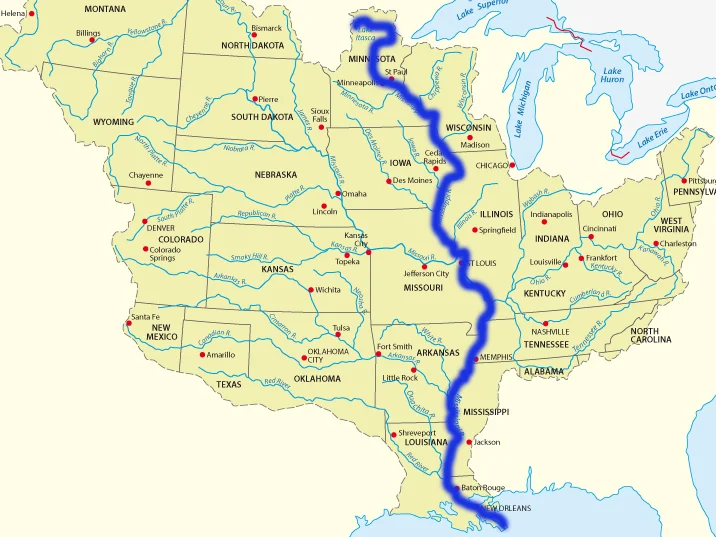
It is more impressive and commanding than I thought. Yes, 2,340 miles long, the longest river in the United States and in North America. It is the 4rd longest river in the world, if you include its longest tributary, the Missouri River. Yes, it touches 10 states, but I did not realize that its catch basin is so large that rain runoff from 32 states flow into the Mississippi, representing 41% of the contiguous United States.
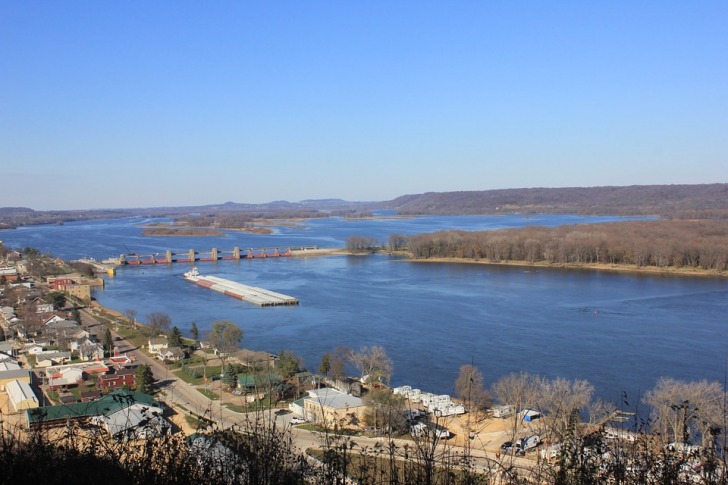
I also was amazed to find out that there are 29 dams and locks on the river between Minneapolis and St. Louis, all managed by the US Army Corps of Engineers. In addition, there are 14 dams north of Minneapolis. The 29 dams and accompanying locks, located between Minneapolis and St. Louis, were built for one reason only – provide waterway navigation for commercial shipping of commodities coming from the Midwestern states. The dams were not built for flood control. While not their primary purpose the dams have benefitted wildlife and waterfowl habitats and provided extensive recreational opportunities, having created hundreds of islands in the river.
The role that the river plays in commerce and our economy is something that I heretofore had not fully appreciated. That changed when I spent time on the river and watched the tug and barge flotillas go up and down the mighty Mississippi.
Barge traffic moving grain, corn and other commodities is something to behold. Picture this — a tug boat, some up to 200 feet long itself, pushing up to 15 barges – a flotilla — full of commodities going down the river, on its way to New Orleans. The length of each barge is about 200 feet, with a width of 35 feet. The entire length of the pusher tug and its 15 barges (3 wide and 5 long) is 1,200 feet, comparable to 4 football fields. This is something you notice when it goes by you!
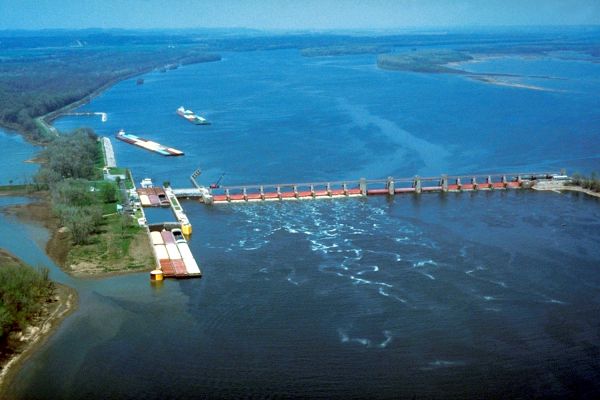
Watching a tug and its 15 barges go through one of the many locks on the Mississippi is fascinating. The clearance on either side of the barges from the sides of the locks is less than 2 feet. The locks themselves are not long enough to handle 15 barges at once, so the pusher tug boat has to maneuver the barges into place, often with the assistance of another tug boat. Once half of the 15 barges are in the lock, then the crew disengages the winches holding the first half of the barges to the second half of the barges. Only one half of the 15 barges go through the locks at a time. Once the first set of barges have moved from the higher water level to the lower water level, then the lock closes, and pumps water into it so that the push tugboat and the remaining barges can enter the lock and eventually be winched back together with the rest of the barges.
Each barge can hold 1,750 tons of grain or 58,333 bushels of corn or 1,555,000 gallons. To duplicate this you would need 16 jumbo hopper rail cars or 70 large semis/tractor trailer trucks.
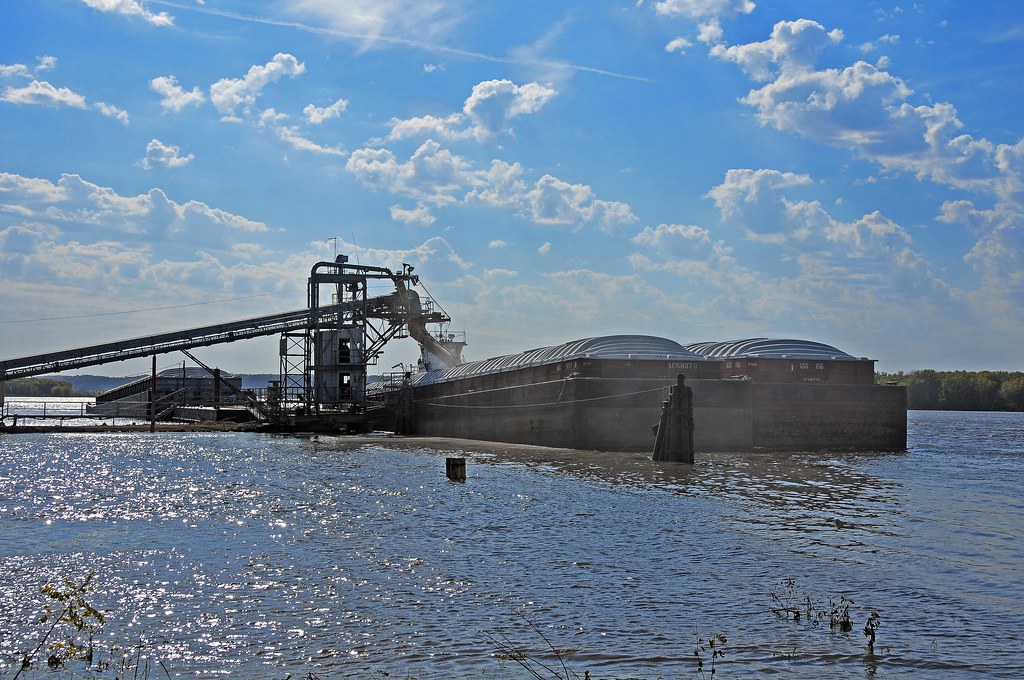
So, using corn as an example, one 15 barge flotilla down the Mississippi River transports 874,995 bushels of corn. It would take 1,050 large semis/tractor trailer trucks on our highways to carry the same amount of corn!
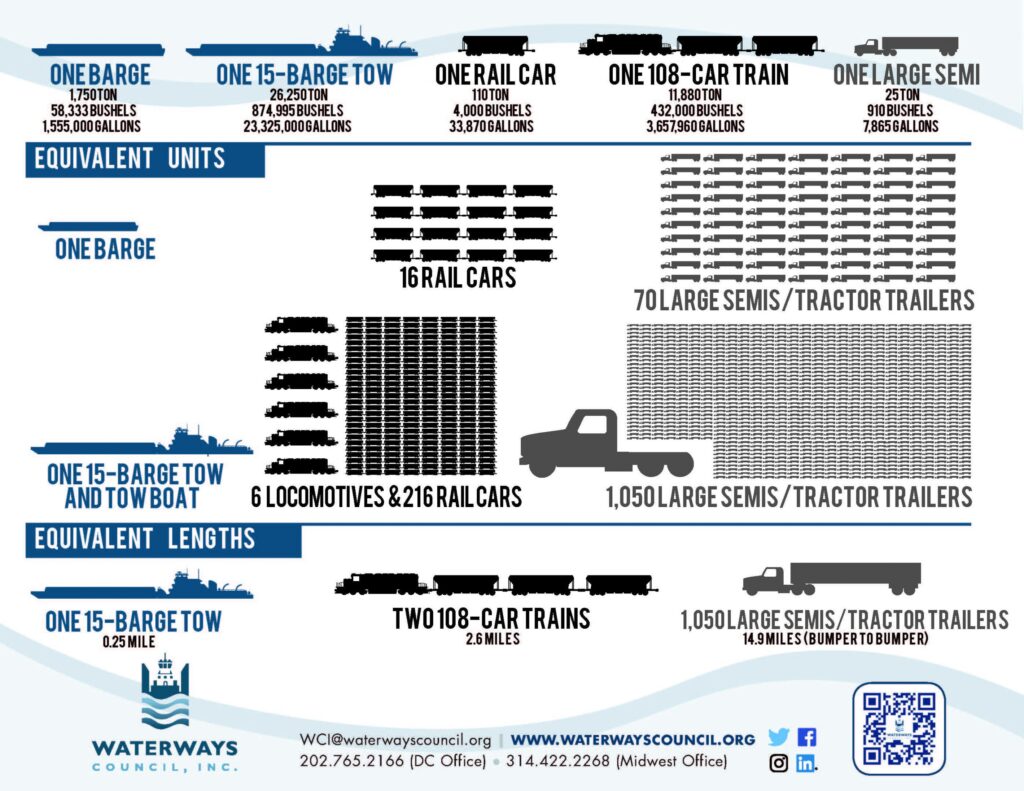
One barge can hold 58.333 bushels of corn which is the yield from 318 acres of corn in Iowa, which produces 183 bushels/acre, for example. Many of the family-owned farms in Iowa are around 250/300+ acres in size.
As a commercial waterway the Mississippi River is very significant. 92% of the nation’s agricultural exports, and 78% of the world’s exports in feed grains and soybeans come from the Midwest basin.
The mighty Mississippi River indeed.
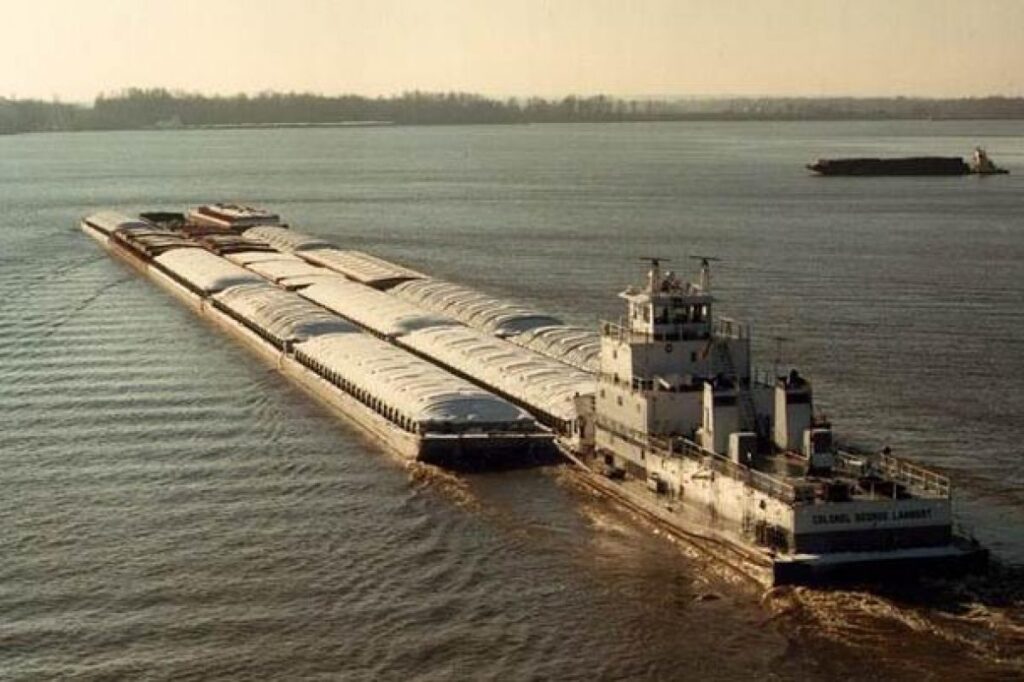
Impressive indeed! What a natural transportation asset for the USA. . We were on a paddlewheeler south of Memphis and passed the barges but I had no idea that there were that many locks and that they had to decouple and reform many times en route.. While Rte 66 is called the Mother Road, the Mighty Missisip ought to be referred to as the Grandfather/Mother/They Road, (must be politically correct and inclusive) not the Big Muddy!
Neil we are getting quite the education on your vacation!
As someone who grew up close to the Mississippi and Missouri rivers I learned from your assessment of barge transport tonnage. Thanks.
I was told that periodically the Mississippi at St. Louis actually freezes. The last time was 1899.
Check out the Missouri River sometime. Lewis and Clark started their expedition west by going up this interesting river.